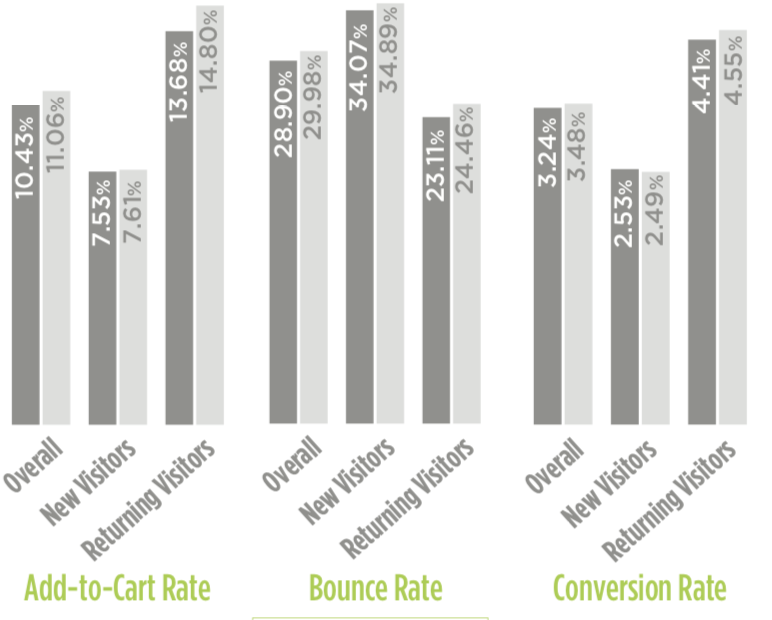4 Steps to Prep Your Store for Cyber Monday & Black Friday
October 26, 2017 - Marketing

According to Adobe Digital Insights, Cyber Monday sales topped $3.39 billion in 2016 marking a 10.2% increase over 2015 and the biggest day in the history of U.S. ecommerce. Black Friday came in a close second with $3.34 billion in ecommerce spending, while total holiday spending reached nearly $40 billion last year. Interestingly, Black Friday could eclipse Cyber Monday spending this year as more consumers look exclusively online for deals.
Interesting aside: China’s Single’s Day on November 11th is technically the biggest online shopping day in the world after Alibaba branded it as a holiday in 2009. Last year, Alibaba brought in more than $17.8 billion in online sales in a single day.
Let’s take a look at how to prepare your ecommerce store for Black Friday and Cyber Monday, and make the most of the holiday shopping extravaganza.
Step 1: Plan Your Sales
The first step is planning what products will be on sale – including so-called “doorbusters” or loss leaders – and how they’re going to be promoted. It’s important to start this process early on to provide enough lead time for marketing campaigns to build up demand. After all, many consumers start looking for deals as early as October and building mind share over time can ensure that they come to your store before visiting other popular retailers.
[content_upgrade cu_id=”466″]Download Free: Product Deal Planning Worksheet[content_upgrade_button]Click Here[/content_upgrade_button][/content_upgrade]
A doorbuster is a product that’s sold below market cost to stimulate the sales of more profitable products. For example, you may offer the first 100 customers a killer deal on an in-demand holiday product and end up attracting thousands of visitors to your store. The best doorbusters have accessories that can be sold alongside the main product at a higher margin. These options should be prominently highlighted at checkout.
In addition to a doorbuster, you should decide what products you’re going to discount, when the discounts will occur, and how the products will be promoted. These decisions will depend largely on your product mix and marketing channels, but it’s a good idea to plan promotions throughout the entire week of weekend and following week, since holiday shoppers tend to be active throughout that entire timeframe (and beyond).
Step 2: Optimize Your Marketing
There are many different marketing strategies that can be used to promote products, but targeting repeat visitors is often the most cost-effective according to Monetate. You should consider adding re-targeting campaigns to advertise to return visitors, while leveraging your mailing list to send out regular promotions going into the holiday shopping season. These efforts may be more profitable than bread-and-butter pay-per-click campaigns.

In addition to these marketing campaigns, you may want to consider making small holiday-focused marketing improvements to your website to increase conversions. A great example is including holiday-specific badges with callouts like shipping deadlines, ‘good for…’ suggestions, or special holiday promotions. Monetate found a 55% improvement in conversion rates for websites that use product badges compared to those that don’t use them!
Finally, consider adding small things that address common holiday shopping concerns. For example, fast or free shipping has become a necessity in today’s Amazon-driven world; price-match guarantees can help reassure customers they’re getting a good deal; and, return policies become extremely important during the holiday season. It’s important to highlight these factors early on in the customer journey to alleviate concerns and maximize conversions.
Step 3: Prepare Your Website
It’s easy to get caught up in the creative marketing process and forget to ensure that everything is working on a technical level. But, the best marketing campaign in the world isn’t going to generate any revenue if a website is down or a promotion doesn’t work. In addition to making sure everything is working, you should ensure that technical personnel are available throughout the holiday season to quickly address any major issues that may arise.
Your technical readiness checklist should include:
Ensure coupons and discount codes work before promoting them
Stress test your store for heavy traffic using tools like LoadImpact
Make sure that live support and toll-free phone numbers are working
Test the mobile and tablet experience is fully-functional and error-free
Set up uptime monitoring solution like Pingdom to let you know if something’s wrong
Enable alternate payment methods if there’s time, like PayPal or Amazon Pay
Keep an eye on error logs, such as those provided by Foxy, that record transaction failures and identify issues early
Aside from these purely technical items, you should make sure that all of your billing is updated and no accounts are set to expire. It would be devastating to have a domain expire or a payment processor go down during the peak holiday season!
Step 4: Have a ‘Plan B’
The final step is to have contingency plans to address unexpected issues that will inevitably arise. For example, what happens if a drop shipper quickly runs out of product or a payment processing gateway fails? Having a back-up plan will help reduce stress and anxiety by having a pre-made plan ready to put in place to address these crises.
Having a back-up plan will help reduce stress and anxiety during the holiday shopping season. Click To Tweet
Some important contingency plans include:
A backup development team capable of stepping in to assist in-house developers as-needed to make sure everything is running smoothly.
A backup supplier for key products that may be at risk of running out quickly or a process for taking backorders for a sold-out product.
A plan to leverage another shipping company if the one that you’re using suddenly becomes too busy or unable to ship orders in a timely fashion.
A plan to deal with a rush of fraudulent orders that may cause a payment processor to start denying payments unexpected.
At Foxy, we enable merchants to use more than 80 different payment gateways and alternate payment methods, as well as seamlessly move between CMS solutions. This flexibility can be invaluable when having to make technical adjustments on-the-fly.
The Bottom Line
Cyber Monday and Black Friday are biggest ecommerce holidays of the year, which makes it important to plan ahead and ensure your store is ready. Often times, this involves carefully planning out what products are going on sale, developing an effective marketing campaign in advance, and ensuring that all everything is working as expected. These steps can help ensure that you’re ready to make the most of the biggest holiday shopping season of the year.
[content_upgrade cu_id=”466″]Download Free: Product Deal Planning Worksheet[content_upgrade_button]Click Here[/content_upgrade_button][/content_upgrade]